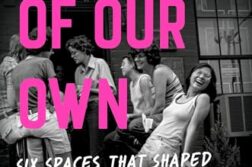 Salt and Paper: 65 Candles
Salt and Paper: 65 Candles
by Janell Moon
RAW ArT Press. 186 pages, $15.
JANELL MOON’S latest novel is one of those books about which it’s easier to say what it isn’t than what it is. Salt and Paper: 65 Candles is presented as a journal, and it does have ascending dates as the year passes, offering a day-by-day record of Janell Moon’s 65th year—sort of. The record is written in scraps. These scraps are not geometrical, like a quilt, but a hodgepodge of words. They aren’t like poetry either, though some parts of the book are poetic insofar as they have an overarching metaphor such that each line advances toward a new insight, as in poetry. The rest are short paragraphs of narrative often structured with sentence fragments, interspersed with seemingly random words and phrases.






